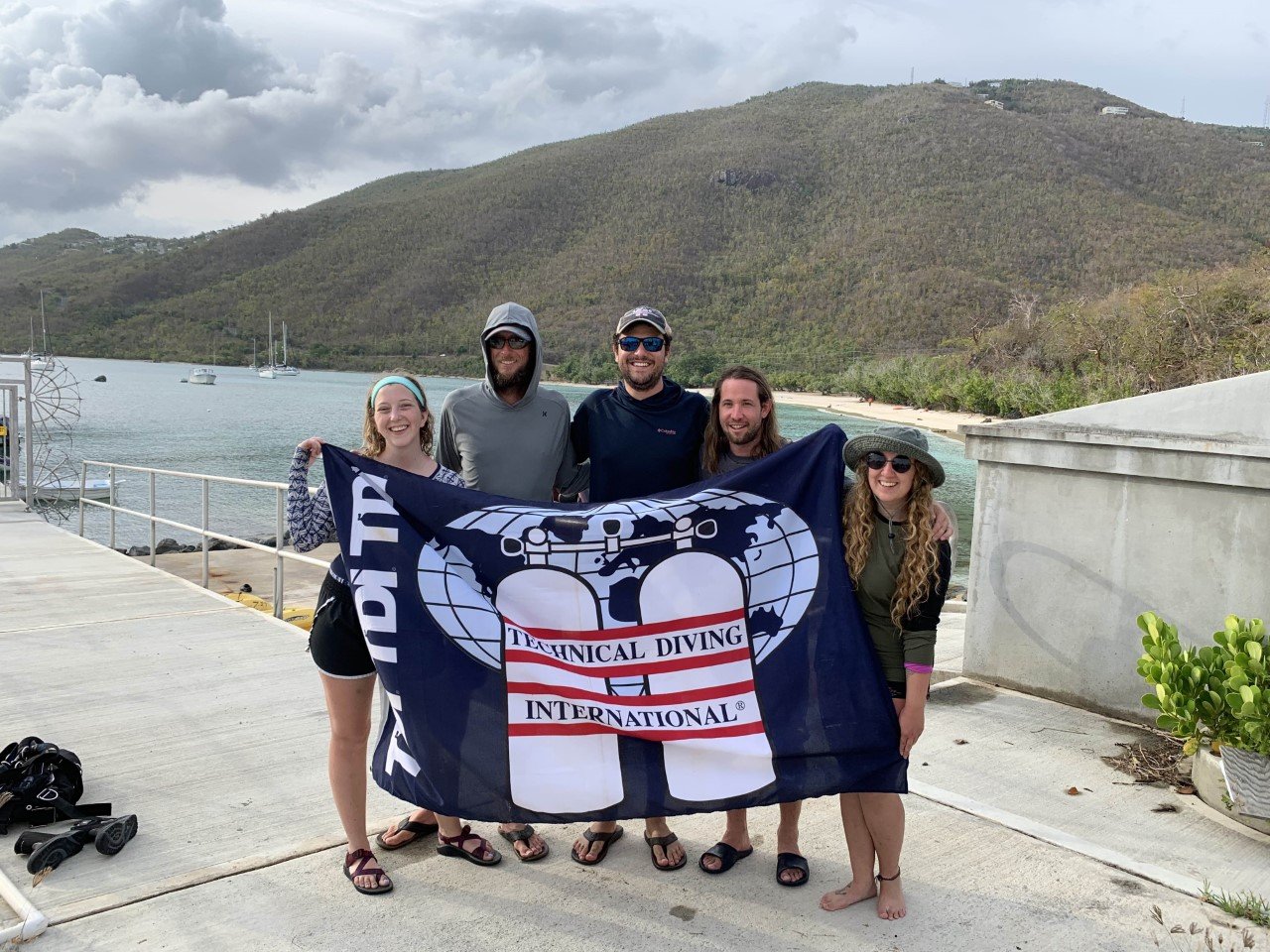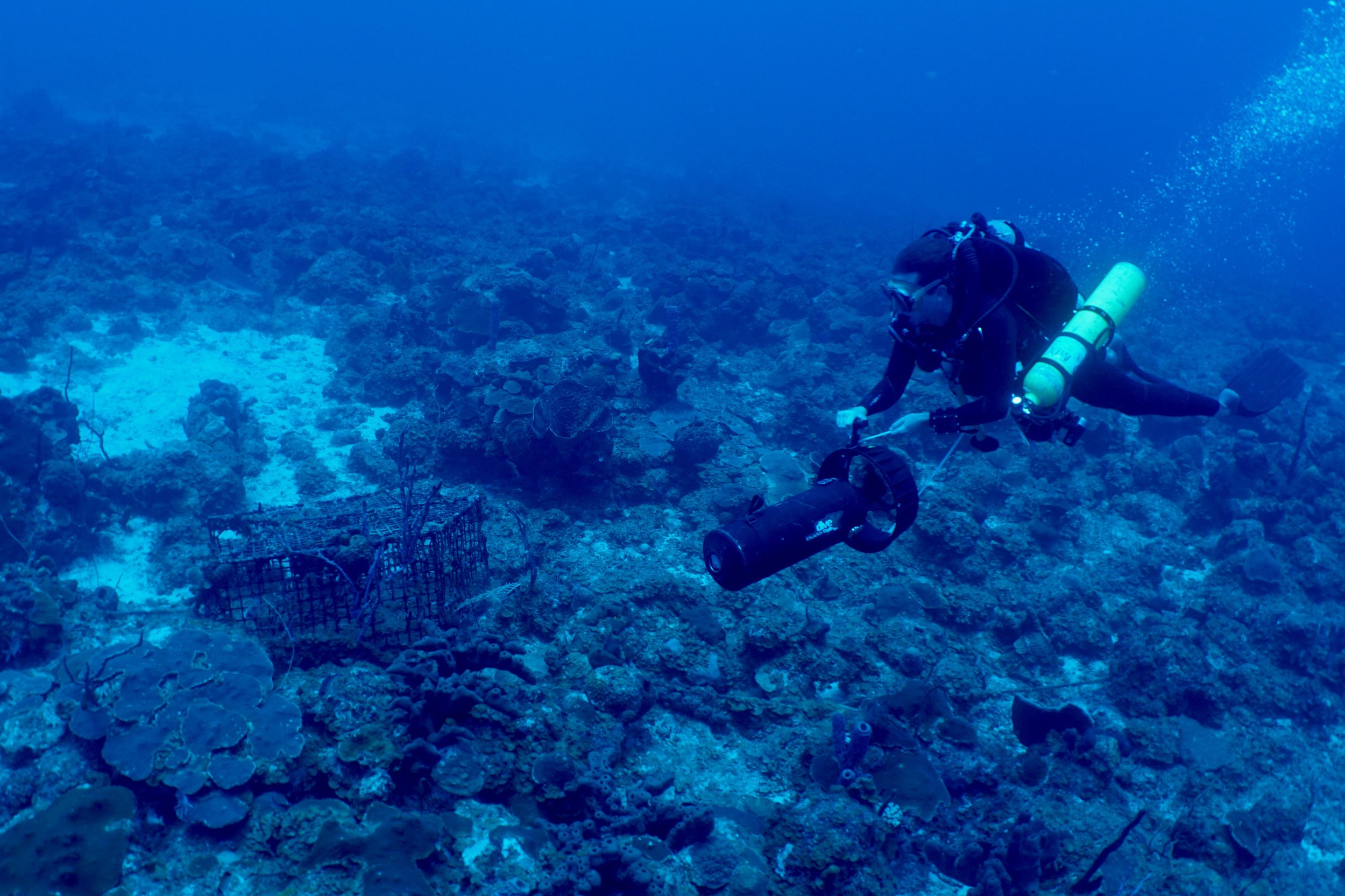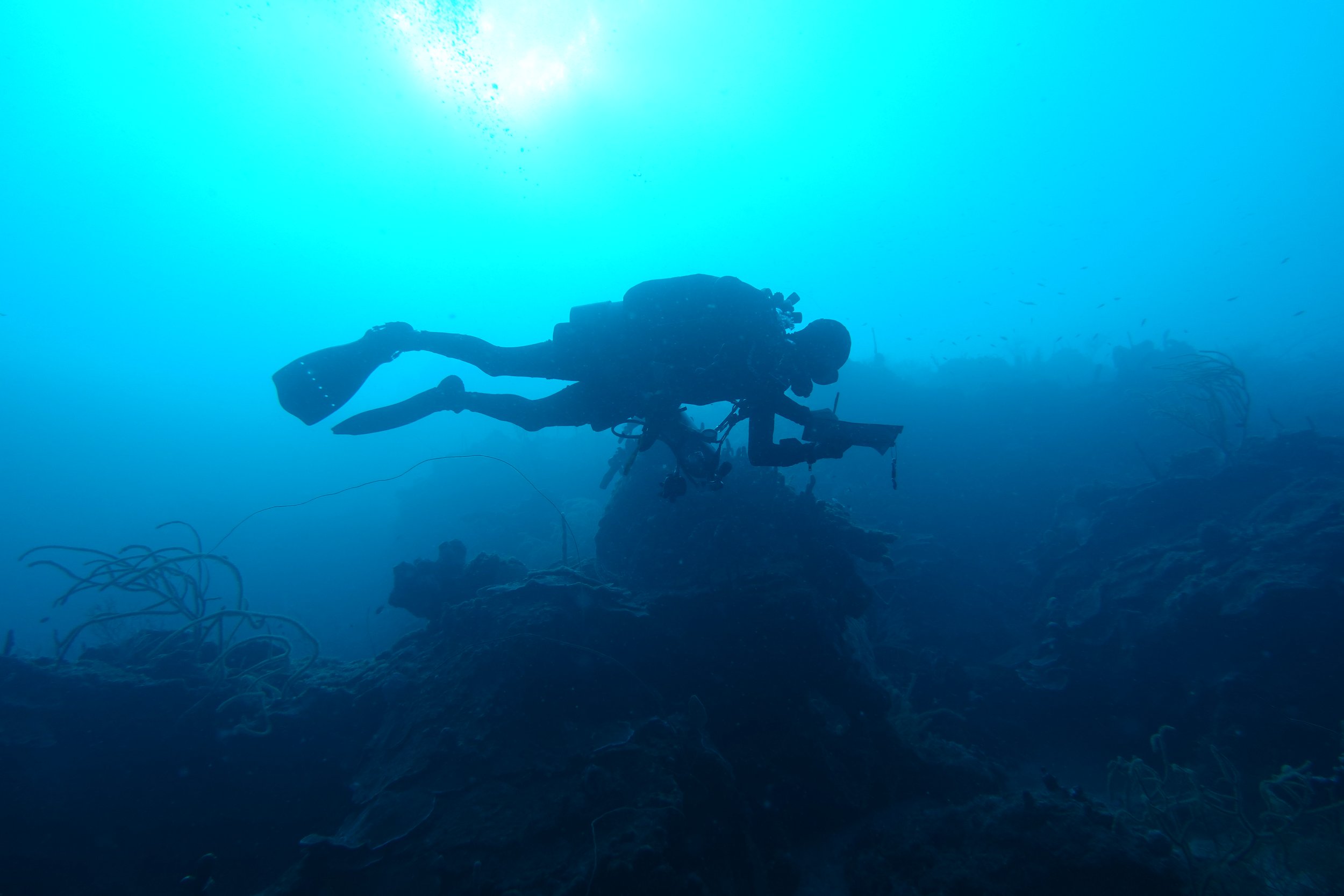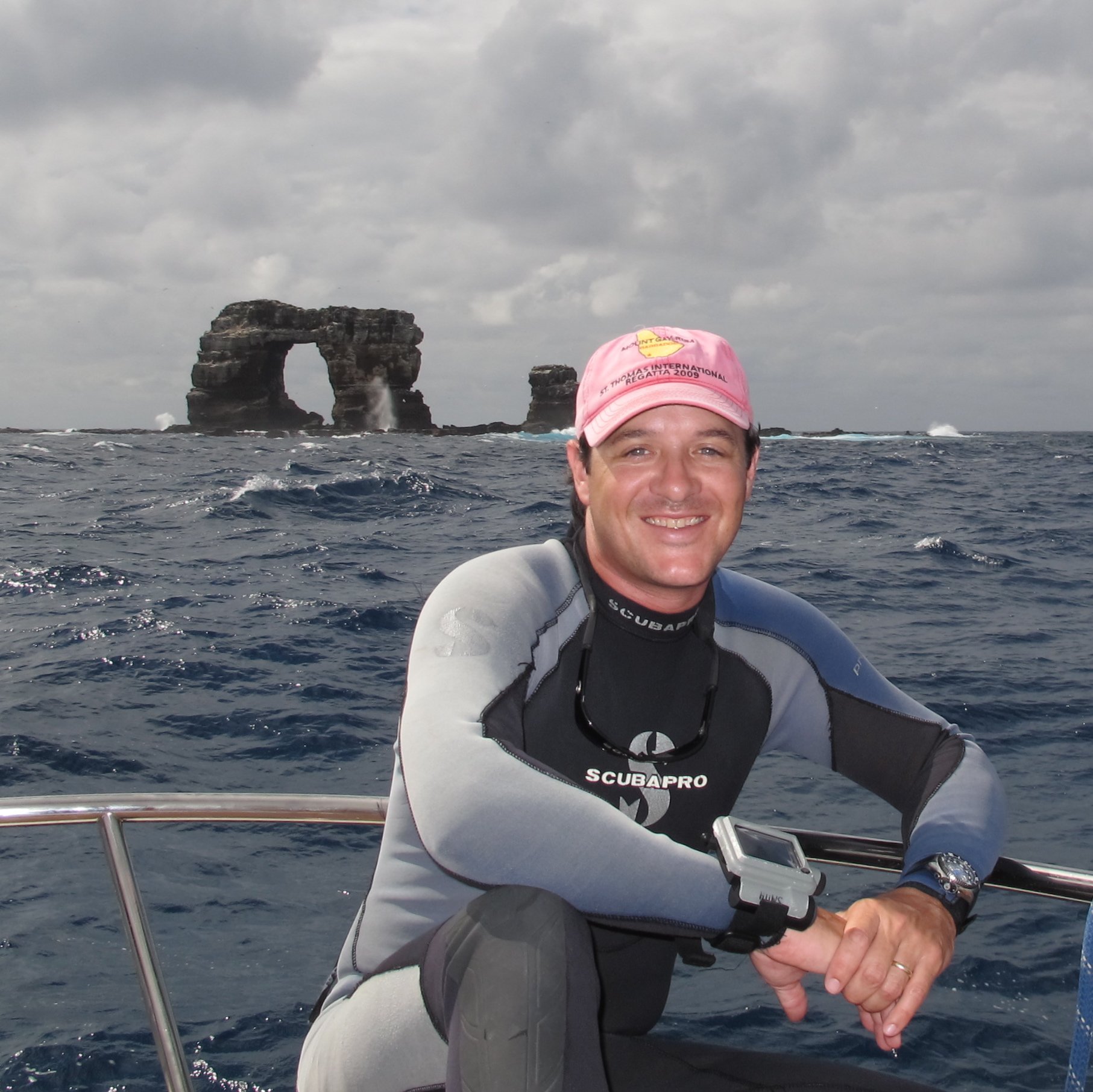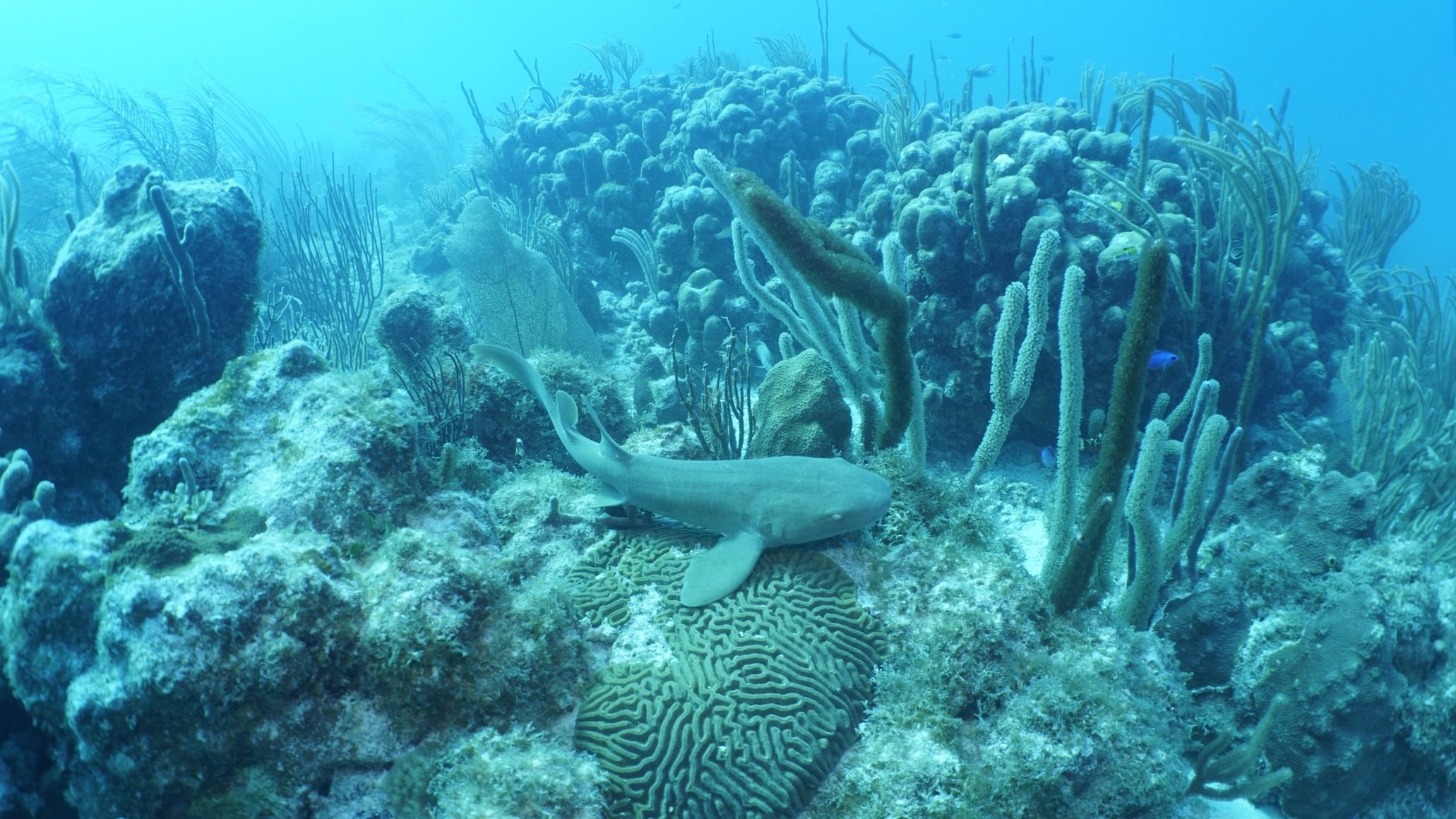CORAL FUTURES
Coral reefs host the highest levels of marine biodiversity, harboring millions of species, and provide food, shoreline protection, and income for hundreds of millions of people. They are also one of most imperiled habitats on Earth and suffer intense stress and disturbance from pollution, fishing, and global climate change. This moment is critical in using science to understand the trajectories of coral reefs and how we can ensure their best possible future.
For these reasons the primary focus of the Coral Reef Resilience Lab is to learn from the past and present to predict the trajectory of coral reefs in the future and what can be done to ensure the most vibrant outcomes for these ecosystems in a changing ocean.
Our work is spearheading research efforts, each with a central link to the coral futures theme. Please explore below to learn about our collaborative efforts
Salt River Canyon
Saint Croix, USVI
Photo: Sonora Meiling
CORAL REEF ASSESSMENT
THERE IS NO WAY TO UNDERSTAND HOW OUR ECOSYSTEMS ARE DOING IF WE DO NOT REGULARLY ASSESS THEIR CONDITION.
USVI Territorial Coral Reef Monitoring Program
The Virgin Islands Territorial Coral Reef Program (TCRMP) is the preeminent program for understanding the trajectories of coral reef ecosystems in the Virgin Islands. This partnership between the National Oceanic and Atmospheric Administration’s Coral Reef Conservation Program, the USVI Dept. of Planning and Natural Resources Coastal Zone Management Program, and the University of the Virgin Islands conducts annual monitoring of 34 coral reefs sites across diverse habitats in waters from 5 - 65 m (17-220 ft) depths. The program greatly compliments other monitoring efforts from the National Coral Reef Monitoring Program (NCRMP) and the National Park Service South Florida/Caribbean Inventory & Monitoring Network. Find out more and access data at the official TCRMP website!
Coral reef monitoring , Buck Island Deep, Saint Croix. Photo: Viktor Brandtneris
The Deep Coral Reef Monitoring Program
The Deep Coral Reef Monitoring Program (DCRMP) is a unique program to map resources of fish and coral across US Virgin Islands seascape in depths from 30-50 meters (100’-165’). It was known from prior research that deeper areas in the northern US Virgin Islands harbor fish and coral populations that are larger and denser than in shallower areas. However, these deeper areas were only assessed at a few fixed sites in the Territorial Coral Reef Monitoring Program or in ad hoc research, and it was difficult to assess the full extent and distribution of fish and coral species. A fantastic program administered by the National Oceanic and Atmospheric Administration (NOAA), The National Coral Reef Monitoring Program (NCRMP), uses spatially stratified random surveys by diver pairs to assess fish, coral, and physical oceanography. NCRMP has surveyed at over a thousand locations across the US Virgin Islands in water depths shallower than 30 meters. DCRMP is an extension of this program into deeper waters using technical decompression diving.
Surveys are conducted between 10-15 minutes on the bottom, with diver pairs recording fish identity, size, and abundance, and site characteristics (such as rugosity, coral cover) within virtual 7.5 m radius cylinder transects. Photos of the site and the seafloor are also captured, with the latter processed by an experienced observer to estimate benthic cover of organisms, such as coral and algae.
Between 2018 and 2022 this program has surveyed over 300 sites and recorded dense populations of corals and fish in many areas of the USVI. Large-bodied groupers and snapper are indeed more abundant in deeper water and often have larger mean sizes . Coral cover peaks in depths of 30-40 meters.
Collaborators: NOAA, Reefs Unknown, the VI EPSCoR Program,
Divers descend to conduct fish and coral population estimates in cylinders (photo: Sarah Heidmann)
Coral cover estimated at NCRMP and DCRMP survey locations from 2018 - 2022. (small yellow circle: <3% coral cover, large blue circle: >40% coral cover).
The eastern tropical Pacific Ocean (ETP) has long been considered marginal for coral reefs, with cooler near-surface waters, high productivity, and restricted reef development with low diversity of stony corals. However, relative to other reefs across the globe, these reef systems were some of the earliest to suffer from regional thermal stress and bleaching mortality due to their susceptibility to the El Niño oceanic phenomena. Thus, they are a natural laboratory of the near future of coral reef ecosystems under increasing anthropogenic (human-related) climate change and ocean warming.
Background: Dr. Peter W. Glynn established a coral reef ecology research program in the ETP in the 1970’s while a staff researcher at the Smithsonian Tropical Research Institution in the Republic of Panama. He became very interested in the ecological relationships on coral reefs and pioneered many studies on novel interactions between organisms and their environment. Between 1972 and 1975 he established long-term permanent plots on reefs on the Pacific side of Panama. This was fortuitous as the 1982-83 El Niño caused unprecedented bleaching and mortality of these reef systems which was well captured in his data. This was the first wake up call that marine heat waves could cause extensive coral mortality and initiated thousands of studies on coral bleaching and its impacts globally. Dr. Glynn showed that on reef at Uva Is., Panama lost over 90% of its coral cover over the 1982-83 El Niño. Further studies from the 1997-98 El Niño and the 2015-16 El Niño continued the tradition of high-impact research on thermal stress and coral bleaching. Uva Island is now among the longest-running coral reef ecological records globally. Dr. Tyler Smith joined Dr. Glynn’s lab as a Ph.D student from 1998-2005 where he studied the ecological impacts of upwelling of cold, nutrient rich water on Panamanian reefs.
Dr. Smith’s research in the ETP falls broadly into the studies of thermal stress responses of corals across El Ninõ events and the ecology of coral reef algae and herbivory.
Eastern Tropical Pacific Coral Reef Research
Dr. Ana Palacio sampling bleached fire coral at Uva Island, Panama (Aug. 20, 2015)
Dr. Smith receives a coveted t-shirt from Dr. Glynn
Eastern Tropical Pacific Thermal Stress
The 2015-16 El Niño caused global seawater temperature anomalies that also affected the ETP. This video shows bleaching of corals at Uva Island, Panama (Aug. 20, 2015). Dr. Peggy Fong assesses coral cover in a fixed quadrant monitored since 1980. video: Tyler Smith
Leveraging long-term ecological data sets in the ETP, Dr. Smith has worked to understand coral reef responses to thermal stress by focusing on coral resistance, resilience, and refugia. This work is a continuation of Dr. Glynn’s research legacy, and is supported by a network of collaborations with his former students and collaborators.
Coral resistance work has focused on how extant corals survive by shuffling symbionts and, in particular, associating with thermally tolerant symbionts (Durusdinium glynni), to maintain high coral cover across thermal stress events. Work has also shown that some massive coral species, which do not associate with thermally tolerant symbionts, survive through shaded tissue refuges that avoid the searing effects of light and high temperature.
Coral resilience work has described the processes that facilitate recovery of reef frameworks and coral species that are extirpated from shallow water.
Bleached and dying fire coral (Millepora intricata) in shallow water (3 m) at Uva Is., Panama in August 2015. Photo: Tyler Smith
Coral refugia work has explored how some coral species with wide depth ranges survive in deeper reef areas that are much cooler and shielded from high thermal stress events. These species may then repopulate shallow reefs in the periods between thermal stress events (Smith et al. 2014). This research was one of the earliest confirmations of the Deep Reef Refugia Hypothesis for some reefs in specific oceanic conditions (Smith et al. 2017).Coral refugia work has explored how some coral species with wide depth ranges survive in deeper reef areas that are much cooler and shielded from high thermal stress events. These species may then repopulate shallow reefs in the periods between thermal stress events (Smith et al. 2014). This research was one of the earliest confirmations of the Deep Reef Refugia Hypothesis for some reefs in specific oceanic conditions (Smith et al. 2017).
ETP Coral Reef Algae and Herbivory
Algal communities in the ETP exist across a range of nutrient regimes, from oligotrophic oceanic islands (e.g., the northern Galapagos) to periodically eutrophic and upwelling influenced gulfs and islands (e.g., the Gulf of Panama). In many cases these reefs are also under high levels of ambient herbivory from invertebrates and fishes. How these algal communities are shaped by these bottom-up and top-down forces and how that in turn influences algal interactions with stony corals is a focus of Dr. Smith’s research.
Past work has shown how a palatable macroalgae can grow in areas of reef with intense herbivory by associating with an unpalatable cyanobacteria (Fong et al. 2007, Smith et al 2010) and how algae under high nutrient upwelling conditions are controlled by abundant herbivores (Smith 2006).
Endangered Coral Mapping Program (ECMP)
Divers asses the health and condition of an Acropora palmata colony in the U.S. Virgin Islands. Photo: Dan Mele
The green alga Caulerpa sp. overgrows a colony of the stony coral Pocillopora sp. at Wellington Reef, Galapagos. Photo: Viktor Brandtneris
Certain coral species are becoming extremely rare across the territory. Recent losses due to Stony Coral Tissue Loss Disease (SCTLD) and historic devastation of branching Acropora spp. have left these species population estimates unknown. Understanding the status of these corals is essential for future restoration planning and management. The Endangered Coral Mapping Program (ECMP) seeks to assess the population, distribution, and health status of endangered and rare corals in shallow water across the territory using a stratified random sampling design. Rapid demographic surveys are conducted at sites <10m in depth targeting the following species: Acropora spp., Orbicella spp., Dendrogyra cylindrus, Mycetophyllia ferox, Dichocoenia stokesii, Eusmilia fastigiata, and Meandrina meandrites. Six hundredsurveys will be conducted across St. Thomas, St. John, and St. Croix from 2024 - 2025.
TECHNOLOGY FOR CORAL REEF ASSESSMENT
CORRL has been integrating new technologies into research and in the process making our coral reef assessments more efficient, more comprehensive, and easier to communicate publicly. Our efforts have been focused on getting people to the environments, surveying across the seascape, and building better pictures of the coral reef benthos.
Technical Diving
The extensive and well-developed mesophotic coral reefs of the US Virgin Islands demanded research attention, but getting to them in person at water depths of 30-100 m is complicated and potentially risky. It was early work on fish spawning aggregations and reef monitoring at mesophotic depths that spurned the development of the technical diving program at UVI. Since 2004 this program has grown exponentially and is one of the most active programs globally (Turner et al. 2017). UVI uses mixed gas technical open circuit diving and closed circuit rebreather diving to conduct in situ research to depths of 100m (330’).
The UVI program stresses risk mitigation to conduct safe decompression diving around the US Virgin Islands and globe.
The CORRL lab is an integral participant in the technical diving program and has used this technology in TCRMP, DCRMP, and a range of other mesophotic research areas.
Autonomous and Artificial Intelligence Platforms
Not all observations of deeper coral reef areas need to be done in person. To survey large areas or locate specific habitats at deeper depths autonomous, smart systems are essential. These systems are more efficient than divers and can cover much more ground and remotely pinpoint targets.
Since 2022 CORRL has used private funding to partner with Matt Dunbabin from the Queensland University of Technology, Australia. Dr. Dunbabin is with a team developing AI powered autonomous systems that are designed specifically to use technological approaches to assist with coral reef management (e.g., crown of thorns sea stars control, coral larval seeding).
Three-dimensional Photography and Coral Demographics
Coming soon!
CORAL REEF ECOLOGY
Caribbean Coral Reef Algae and Herbivory
Coral reef algae are fundamental photosynthetic organisms that are deeply ingrained in the ecology of coral reefs. Algae help direct the flow of nutrients and carbon, provide structure and food for motile organisms, and compete with corals for benthic space. The abundance and growth of algae is affected by bottom-up factors, such as resource availability (light, nutrients), and top-down factors, such as competition and herbivory.
The CORRL lab has focused research on all aspects of coral reef algae in the Caribbean, with an emphasis on understanding what controls populations of algae and how algae impact stony corals.
Significant research on coral reef algae in the Caribbean has been conducted in CORRL, particularly by students.
Tanya Ramseyer (M.Sc. 2018) was interested in factors affecting the growth of important algal species in the Caribbean. In Ramseyer et al. (2021) she showed that a dominant shallow water macroalgae, Dictyota spp., has sufficient nutrients for growth in most environments and is not responsive to modern levels of coral reef herbivory. Surprisingly, nutrient addition actually inhibited growth of Dictyota.
Ramicrusta textilis overgrow Orbicella faveolata
The rapidly expanding nuisance algal Ramicrusta textilis has the ability to overgrow and kill living stony corals. This raises the question of what can be done to control its impacts. (photo: Karli Hollister)
A UVI undergraduate student weighs the alga Acanthophora spicifera for an experiment
Experimental herbivory assays allow researchers to assess relative levels of herbivory across reefscapes. (photo: Tyler Smith)
Dictyota sp. in Brewers Bay, Saint Thomas
The most common shallow water alga Dictyota can cover up to half of reef surfaces in the USVI. Understanding the factors that control its distribution and abundance are key to explaining why the genus has become so abundant on reefs. (photo: Sonora Meiling)
Karli Holliseter (M.Sc. 2020) was interested in factors controlling the growth and competitive ability of the nuisance alga Ramicrusta textilis on reefs of the US Virgin Islands. In Hollister et al. (2021) she looked at the ecology of R. textilis, which is an emerging threat to Caribbean coral reefs. Through three-dimensional video modeling of coral colonies in contact with Ramicrusta she found that most species studied were losing coral tissue to the overgrowth of the alga, with the exception of the greater starlet coral, Siderastrea siderea. In cases of overgrowth it appeared that the alga grew faster over living coral tissue than dead coral controls and that even in low abundance that there could be a high prevalence of interactions with living coral. These results suggested the possibility of an advantage to Ramicrusta of overgrowing coral, possibly because of coral tissue degradation on nutrient release and stimulation of algal growth.
Coney peeking. (photo: Tyler Smith)
Stylaster sp. in the mesophotic. (photo: Tyler Smith)
The 4x5 long-term research plot.
This plot established in 1984 at Uva Is., Panama has allowed researcher to understand processes of reef recovery and resistance over thermal stress events.
DONATE TODAY
Find out how your donation can make a difference.









